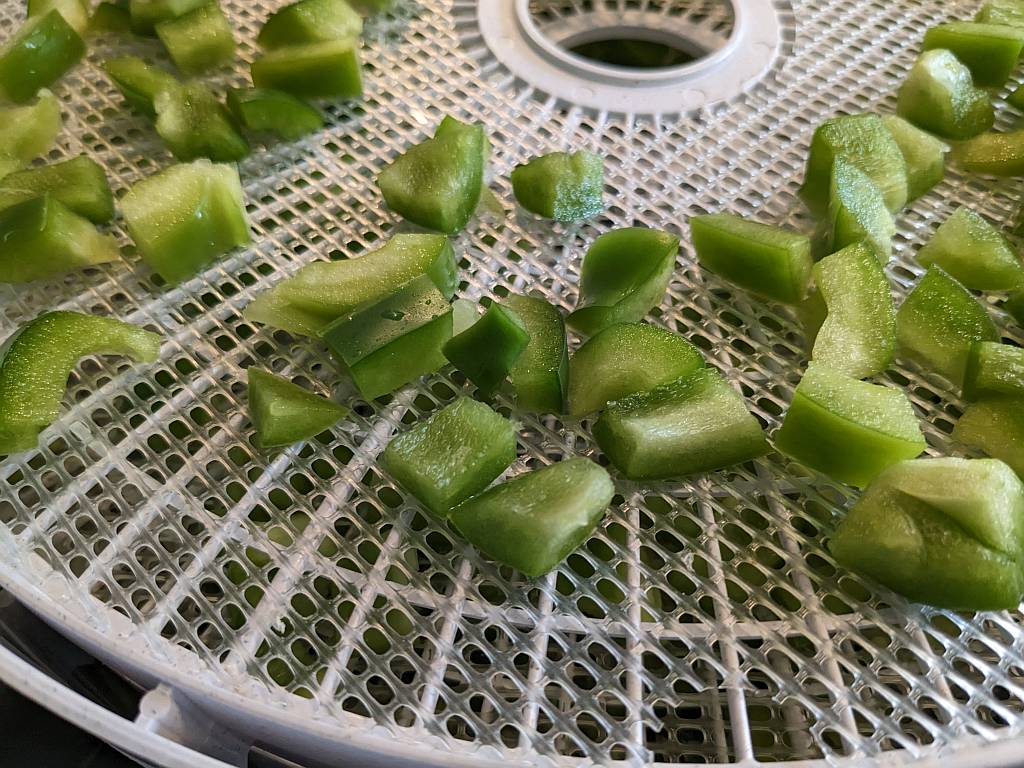Welcome to How to Dehydrate Vegetables 101: A Beginner’s Guide on How to Dehydrate and Store Vegetables. In this comprehensive beginner’s guide, we will explore the world of vegetable dehydration, providing valuable tips on drying techniques and proper storage for long-lasting vegetable goodness.
The Dehydrator Chef website primarily focuses on dehydrating ingredients to make homemade camping meals. We take the dehydrated ingredients and put them together into tasty meals that can be reconstituted with water out on the trail or in the field.
While dehydrated food is a great lightweight option for hiking and camping, it’s also great for food preparedness. Being prepared for emergencies, disasters, or situations where access to regular food supplies may be limited or disrupted involves having a stock of food and resources that can sustain individuals or households during such challenging times.
Table of Contents
- The Benefits of Dehydrating Vegetables for Long-term Storage
- The Dehydrator Chef Step-by-Step Guide How to Dehydrate Vegetables
- Summary

The Benefits of Dehydrating Vegetables for Long-term Storage
Discover the numerous advantages of dehydrating vegetables:
- Long-term storage: Dehydrating vegetables allows for long-term storage by removing moisture, preventing spoilage, and extending their shelf life. Say goodbye to waste and enjoy your dehydrated vegetables for many months to come.
- Reducing food waste: Dehydrating vegetables is an excellent way to reduce food waste. Preserve excess produce before it spoils, and minimize your environmental impact by utilizing every bit of fresh produce you have on hand.
- Making homemade dehydrated camping food: Dehydrated vegetables are perfect for creating homemade dehydrated camping meals. Enhance mealtimes with nutritious and flavorful ingredients that are easy to rehydrate and even incorporate into campfire recipes.
- Stocking up the pantry: Dehydrated vegetables provide a convenient option for stocking your pantry. With a supply of dehydrated vegetables readily available, you can effortlessly add nutrition and flavor to soups, stews, stir-fries, and other recipes.
- Food preparedness: Dehydrated vegetables are a valuable resource for food preparedness. They serve as a reliable means to augment food sources and provide nutrition during emergencies or when access to fresh produce may be limited. Be more prepared by having a good stock of dehydrated vegetables on hand.
The Dehydrator Chef Step-by-Step Guide How to Dehydrate Vegetables
This guide is specifically designed for beginners in vegetable dehydration. It covers all aspects of the process, ensuring you have a comprehensive understanding. Topics covered in this series include:
- Dehydration concepts: Get familiar with the fundamentals of vegetable dehydration, including the science behind it and the benefits it offers.
- Tools and equipment: Learn about the essential tools and equipment needed for successful vegetable dehydration. Discover the dehydrator chef’s recommended equipment and how to choose the right food dehydrator for your needs.
- Food safety and sanitation: Understand the importance of safety and hygiene practices during food dehydration. Discover tips on cleanliness, temperature control, sanitation, and allergen awareness.
- How to dehydrate vegetables: Follow our step-by-step instructions to master the art of dehydrating vegetables. Learn the techniques for preparing, blanching, and dehydrating various vegetables to achieve optimal results.
- Conditioning and storage: Explore all the steps of conditioning and storing dehydrated vegetables to maintain their quality and maximize their shelf life.
- Dehydrated vegetable recipes: The Dehydrator Chef website offers many recipes for dehydrated ingredients, including vegetables and also homemade dehydrated camping meal ideas. We are adding more all the time.
- Replicating Successful Results: A logbook allows you to record successful dehydration projects, including the specific techniques, temperatures, and duration that yielded excellent results. By referring back to your logbook, you can replicate those successful outcomes in the future.
Summary
In this Vegetable Dehydration 101: A Beginner’s Guide on How to Dehydrate and Store Vegetables. introduction, we highlighted the benefits of dehydrating vegetables, including long-term storage, reducing food waste, making homemade dehydrated camping food, stocking up the pantry, and food preparedness. We also emphasized that this beginner’s guide is designed to assist those new to vegetable dehydration. It covers dehydration concepts, tools and equipment, food safety and sanitation, step-by-step instructions, conditioning, storage, recipes, note-keeping, and more. Get ready to embark on your dehydrating journey and unlock the wonders of dehydrated vegetables!
Next: Selecting the Best Vegetables to Dehydrate
